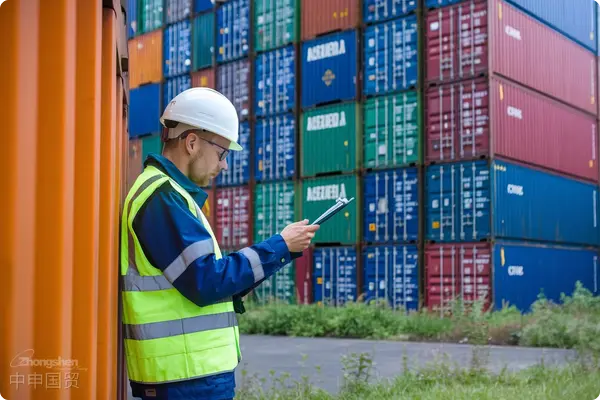- Shanghai Zhongshen International Trade Co., Ltd. - Two decades of trade agency expertise.
- Service Hotline: 139 1787 2118
The US Customs and Border Protection (CBP) announced that, starting from November 12, 2024, it will no longer accept any US import cargo data containing vague descriptions. If the declared cargo description is determined by CBP to be inaccurate or vague, the enterprise may face the rejection of the cargo or its detention at the origin until a detailed description meeting the requirements is provided. This means that freight enterprises such as FedEx may refuse to accept the cargo before it departs, affecting transportation efficiency.

FedEx specially reminds customers: Accurately describing the cargo is the key
FedEx specially reminds customers that when creating freight documents, it is very important to ensure the provision of an accurate cargo description to meet CBP requirements. This not only helps the cargo clear customs smoothly but also avoids delays caused by description problems. For example, instead of simply labeling the cargo as toys, it is better to describe it in detail as plastic - made childrens toys; similarly, instead of generally calling it clothing, a more accurate description should be womens clothing made of 60% cotton and 40% polyester. Such detailed descriptions help avoid the detention of the cargo.
HandwrittenAir TransportationThe form may cause delays
It should be noted that after the implementation of this new regulation, if handwritten air waybills are still used for imported goods, it may increase the transportation time by 1 day. To avoid unnecessary delays, it is recommended that enterprises try to use the electronic declaration method and provide a complete and accurate cargo description.
CBPs Guide on Descriptions: Examples of Compliance Cases
To help enterprises understand what constitutes a qualified cargo description, the US Customs and Border Protection (CBP) provides some examples to guide enterprises in creating compliant commodity descriptions. The following are some unacceptable and acceptable description examples for reference:
| 不可接受的描述 (Unacceptable) | 可以接受的描述 (Acceptable) |
|---|---|
| “Bubbles Brand” / “品牌” | “Bubbles Brand Laundry Detergent” / “泡泡牌洗衣粉” |
| “Animals” / “動物” | “Horse” / “馬” |
| “Apparel” / “服裝” | “Women’s Dresses” / “女士連衣裙” |
| “Men’s Apparel” / “男士服裝” | “Men’s Shirts” / “男士襯衫” |
| “Appliances” / “家電” | “Refrigerator” / “冰箱” |
| “Accessories” / “配件” | “Hair Elastics” / “發圈” |
| “Auto Parts” / “汽車零件” | “Air Filters” / “空氣過濾器” |
| “Blanket” / “毯子” | “100% Polyester Blanket” / “100%聚酯纖維毯子” |
| “Caps” / “帽子” | “Baseball Caps” / “棒球帽” |
| “Chemicals” / “化學品” | “Aluminum Potassium Sulfate” / “明礬” |
| “Cleaning Products” / “清潔產品” | “Detergents” / “清潔劑” |
| “Daily Necessities” / “日常用品” | “Plastic Comb” / “塑料梳子” |
| “Electronic Goods” / “電子商品” | “Computers” / “電腦” |
| “Equipment” / “設備” | “Oil Well Equipment” / “油井設備” |
| “Foodstuffs” / “食品材料” | “Packaged Rice” / “包裝大米” |
| “Gifts” / “禮物” | “Toy Car” / “玩具車” |
| “Frames” / “框架” | “Picture Frames” / “相框” |
| “Hose” / “軟管” | “Rubber Garden Hose” / “橡膠花園水管” |
| “Kitchen Supplies” / “廚房用品” | “Stainless Steel Kitchen Knives” / “不銹鋼廚房刀具” |
| “Machines” / “機器” | “Sewing Machines” / “縫紉機” |
| “Medical Supplies” / “醫療用品” | “Medical Gloves” / “醫用手套” |
| “Metal” / “金屬” | “Metal Pipes” / “金屬管道” |
| “Oil” / “油” | “Mineral Oil” / “礦物油” |
| “Plastic Goods” / “塑料制品” | “Plastic Kitchenware” / “塑料廚具” |
| “Supplements” / “補充劑” | “Vitamins” / “維生素” |
| “Sporting Goods” / “體育用品” | “Soccer Ball” / “足球” |
| “Toiletries” / “洗漱用品” | “Towels” / “毛巾” |
| “Toys” / “玩具” | “Wooden Children’s Toys” / “木制兒童玩具” |
| “Wires” / “電線” | “Steel Wire” / “鋼絲” |
CBP emphasizes that vague descriptions not only increase the difficulty of review but may also lead to the detention of goods, further affecting the enterprises logistics and costs. Enterprises should refer to the examples provided on CBPs official website to ensure that the cargo description is accurate and clear. For more detailed information, visitCBP貨物描述指南.
Key measures to avoid unclear cargo descriptions
- Clarify the materials and uses of the goods: The description must include the specific materials and uses of the goods. For example, describing wooden table is more appropriate than simply labeling furniture.
- Avoid using brand names to replace cargo descriptions: For example, Bubbles Brand can only be used as a supplement to the commodity name, and it is necessary to state that the commodity is Bubbles Brand laundry detergent.
- Use common names and chemical components: For chemicals, the description should use the chemical name instead of the brand name. For example, use methanol instead of chemicals of a certain brand.
- Review and modify descriptions in advance: Before the goods are transported, ensure a detailed review of all descriptions to avoid unnecessary detentions and delays caused by ambiguous descriptions.
Necessity of compliant descriptions: Guarantee for smooth trade
The new regulations implemented in November 2024 are aimed at the CBP to improve the transparency and accuracy of import data and help prevent lawbreakers from evading supervision through ambiguous descriptions. This sets higher requirements for all enterprises engaged in exports to the United States, but at the same time provides a guarantee for the safety of the flow of goods. To ensure compliance, enterprises need to thoroughly review all documents before the goods are shipped to ensure that the descriptions meet the new requirements of the CBP.
Accurate goods descriptions are not only a requirement for compliance but also the foundation for ensuring smooth trade. Enterprises should adjust their operating procedures as soon as possible to adapt to the new description requirements and reduce the risk of possible delays and fines. Remember, a detailed description is not only a responsibility for the goods but also a guarantee for the successful completion of the trade.
Related Recommendations
Contact Form
? 2025. All Rights Reserved. 滬ICP備2023007705號-2  PSB Record: Shanghai No.31011502009912
PSB Record: Shanghai No.31011502009912









